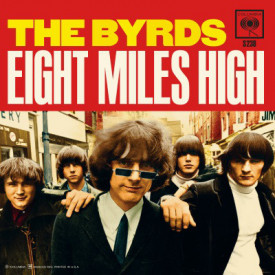

Additionally, the train is lighter than similar designs by Talgo and Siemens, reportedly shedding up to 70 tons.


The train itself is built by Alstom AGV and is unique in that it is powered by axles throughout the rake, rather than having an engine at the front and rear, allowing for its impressive speed. Often referred to as the "Ferrari of the tracks," the consortium is headed by former Ferrari president Luca Cordero di Montezemolo. The plum red trains operated by Nuovo Trasporto Viaggiatori hold the title of Europe's fastest train, reaching speeds of up to 223 mph. Seats are available for both reserved and unreserved travel, but many lines experience exceptionally high demand, so interested travelers should consider booking in advance. Each ten-car train includes eight Ordinary Class compartments that seat five abreast, a Green Class with four abreast seating, and a First Class with three abreast seating. The Japan Rail Pass offers an economical option for travel on the H5. The train is known for its silent cars, thanks to excellent acoustic suppression, and all seats face forward. Among several bullet train models, the H5 is the newest, which started service in 2016 and bears some resemblance to the Talgo 350. Currently, there are nine operational routes, and four more are expected to begin operations by 2023. The network spans from Sapporo in the north to Nagasaki in the south, with Tokyo being its main hub. Japan is considered the birthplace of modern high-speed railway networks, and its "bullet train" is a legend, being the first and only choice for many purists. Constructed from aluminum alloy, the train's long, barracuda nose makes it the envy of the rest of the world. The fastest train routes run from Beijing to Shanghai, Guangzhou, and Shenzhen. The seats, like airplanes, have LED screens, power outlets, and reading lamps. The train is available in various configurations with eight to sixteen compartments and includes exceptional six-seat executive compartments equipped with a bar and a sightseeing lounge behind the driver. The China South Locomotive & Rolling Stock Corporation Limited (CSR) designed the Harmony CRH 380A, which is the second-fastest wheeled train globally and started operation before the Beijing Olympics. Japan, China's historical rival, lost its position as the fastest train operator to China ten years ago.
#Eight miles high acoustic trial#
According to reports and trial runs, the BF version can exceed speeds of 250 mph.Ĭhina takes the top three spots for the world's fastest trains, demonstrating its technological advancement in the past four decades. In 2016, the train made its debut and outpaced its Harmony 380 sibling by 13 mph to take the lead. The trains are usually in eight or sixteen-car sets. The Fuxing Hao CR400's name translates to "revitalization," and it has two models, AF and BF, that differ slightly from each other and are called "Dolphin Blue" and "Golden Phoenix," respectively. The Fuxing Hao CR400 is currently the swiftest conventional long-distance train worldwide, capable of accommodating more than 550 commuters and covering the distance between Shanghai and Beijing in just five hours. The only other operational maglev system in the world is at South Korea's Incheon Airport, and it runs at a speed of only 68 mph. However, long-distance maglev is not yet feasible because the tracks must be perfectly straight, and it is prohibitively expensive to construct. Because there is no contact with the tracks, there is no noise or vibration. It is similar to a hovercraft but for trains. This allows them to reach high speeds that are comparable to those of airplanes. Maglev trains levitate over the tracks with the help of magnetic repulsion, eliminating the need for wheels. For comparison, the Union Pacific 4014, also known as The Big Boy, which was the fastest train in the United States after the Second World War, would have taken more than twenty minutes to complete the journey. The trip is only 8 minutes long, and trains depart every fifteen minutes. The longest maglev tracks are in Shanghai, and they connect the Pudong Airport with Longyang Road Station. Maglev technology has been around for about thirty years, but it has not been successful in most places. The world’s fastest train is the Shanghai Maglev, which some people might not consider a genuine train, but it is.


 0 kommentar(er)
0 kommentar(er)
